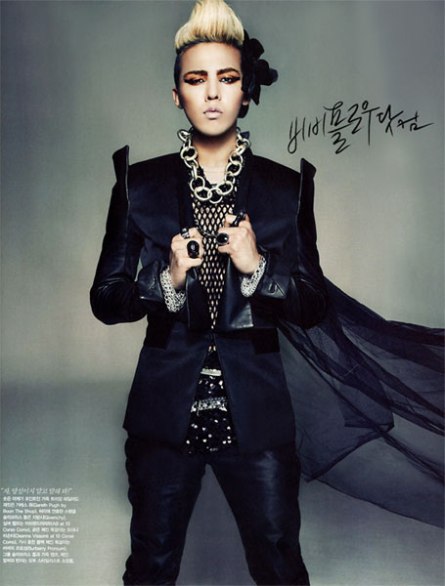Okay stop – before you continue, click the link to read this story about G-Dragon, the Korean pop superstar slash up-and-coming fashion icon, written and produced for Complex magazine. Make sure you read it all. Protip: use the arrow keys to scroll down, and release when the scrolling temporarily stops.
Tell me: are you not entertained?
It seems that Complex Mag, the brainchild of fashion entrepreneur Marc Ecko, is trying it’s hand at some dynamic, immersive digital publishing. Internally, they’re calling this project “Future,” according to Digidaily. This intensely visual publishing platform is allegedly set up to handle at least one unique story a week, and they’re using this story of G-Dragon as their prototype.
I’ll tell you the truth: I’m madly in love with this story. The visuals, the text, the photos, the interactive elements, the GIFs, the color palette, everything. Funny thing about love, though – only fools rush in.
Therefore, I’m going to break down why I believe Complex has stepped out as a potential digital magazine leader with “Future” – if not in subscription numbers, in content production.
1. The interface
Complex is not the first to implement this “while-you-scroll” interactive layout design. Arguably the most publicized is the New York Times “Snow Fall” feature, and Pitchfork ‘s sporadic Cover Features are similarly coded. However, Complex is building on the weaknesses of it’s predecessors: Snow Fall took 6 months and (allegedly) than $1 million to make, and Pitchfork’s productions are all uniquely coded, meaning they’re usually released months apart.
Plus, it gets worse: Snow Fall, a huge 11-person project, was reproduced in less than an hour by a single tech developer, much to the NYT’s chagrin. And Pitchfork is full of hipsters – ew.
Here’s why Complex is doing it right: it’s simple.
The interface isn’t a unique design, nor is it a pile of unintelligible code. Although the images, text and video may have taken lots of work, the animation is simple while immersive. The source code is relatively short, the GIFs easy to make, and the animations straightforward. The transitions in this work are a little less… flamboyant than some of the Pitchfork pieces.
“Future” is designed as a platform, a template that promotes creativity but allows for fast turnaround. The framework was designed over a period of three months and is easily customizable, according to Complex CEO Rich Antoniello.
Hmm, it sounds like this platform was designed for…
2. The rapid ability to produce stories
The best part about this initiative? It’s not a gimmick. Antoniello boasted that Complex will be publishing “1-2” of these features a week, which craps all over NYT’s and Pitchforks special editions. Complex is making this a consistent form of publishing, which is a step towards raising the bar on digital print media. No longer can you just regurgitate print stories on a webpage and let it fly – if this initiative takes off for Complex, you’ll see everyone rushing to keep up. And finally…
3. Future’s shortcomings are superficial
Sure, the design doesn’t include music (which would have been instrumental in G-Dragon’s story) and it doesn’t have videos, but Antoniello assured these features are incoming. This only leaves one big problem: the website isn’t adapted for mobile. Could you imagine seeing this on an iPad? There’s no way this hasn’t been discussed in the Complex developer office.
Still, my hopes are high for Complex. I’m genuinely impressed by this step forward from a relatively average-circulation magazine, and I think we’ll be seeing big things from them in the future.
In the meantime, I’ll spend my time trying to comprehend G-Dragon’s fashion sense.



